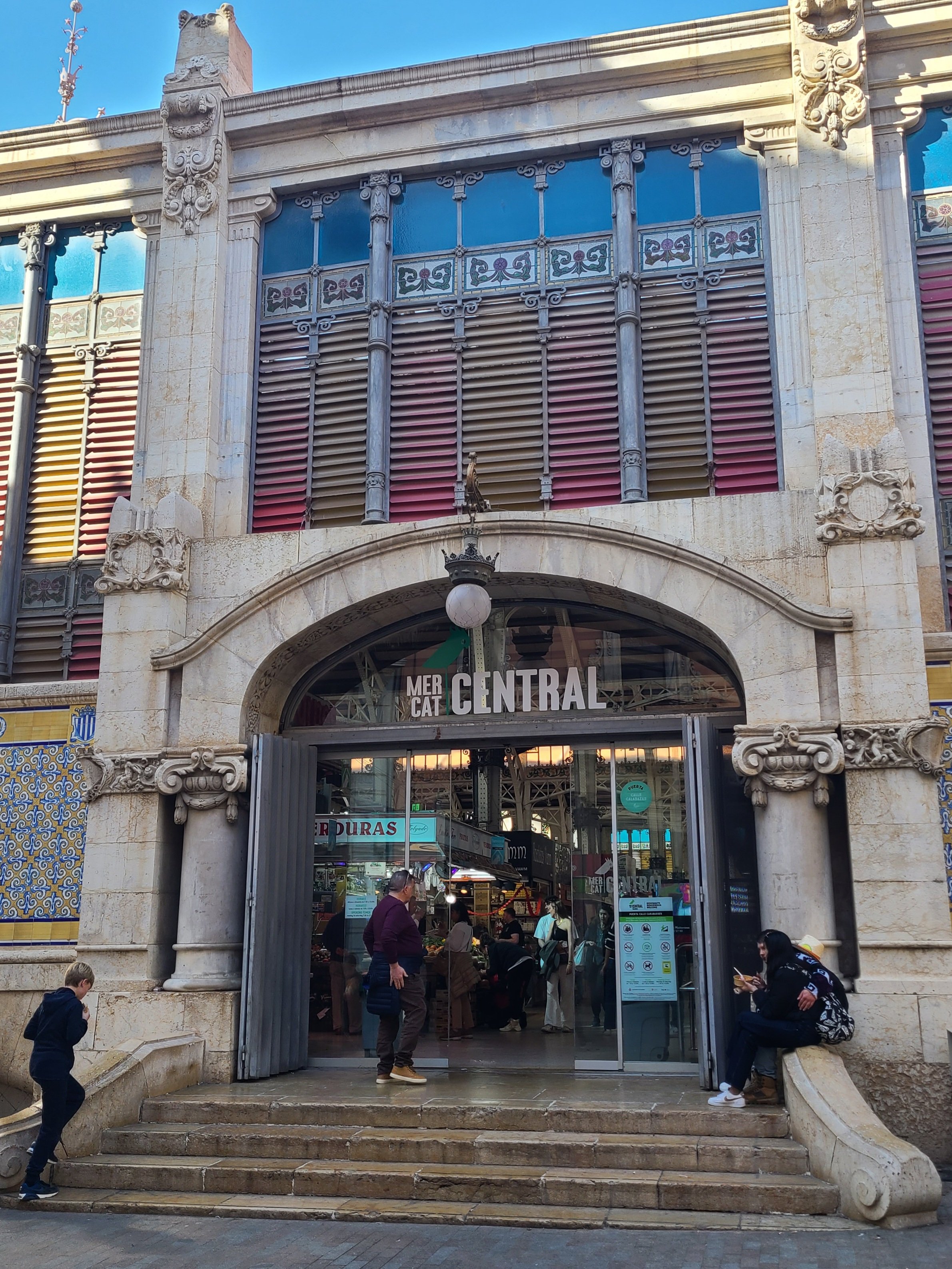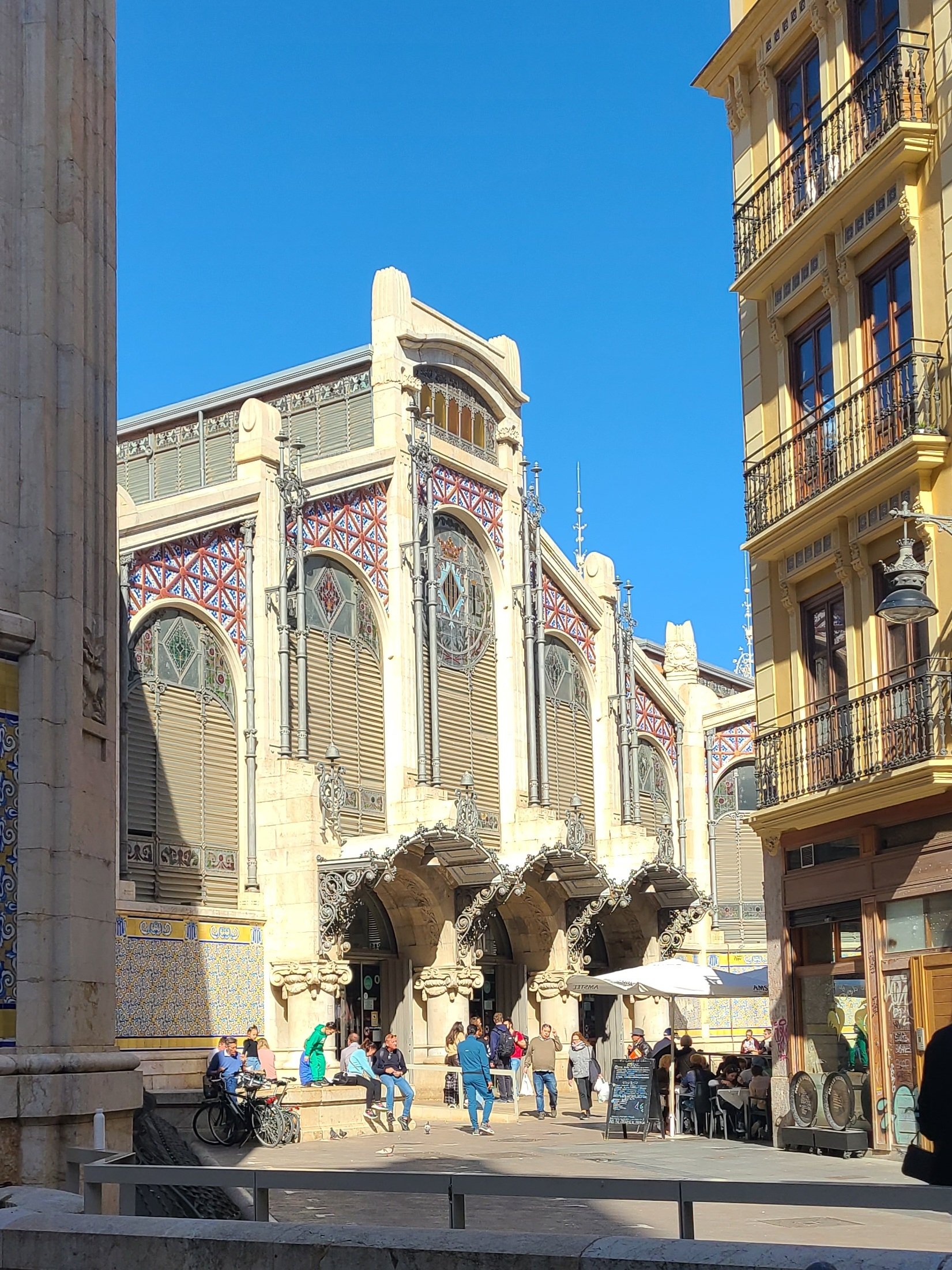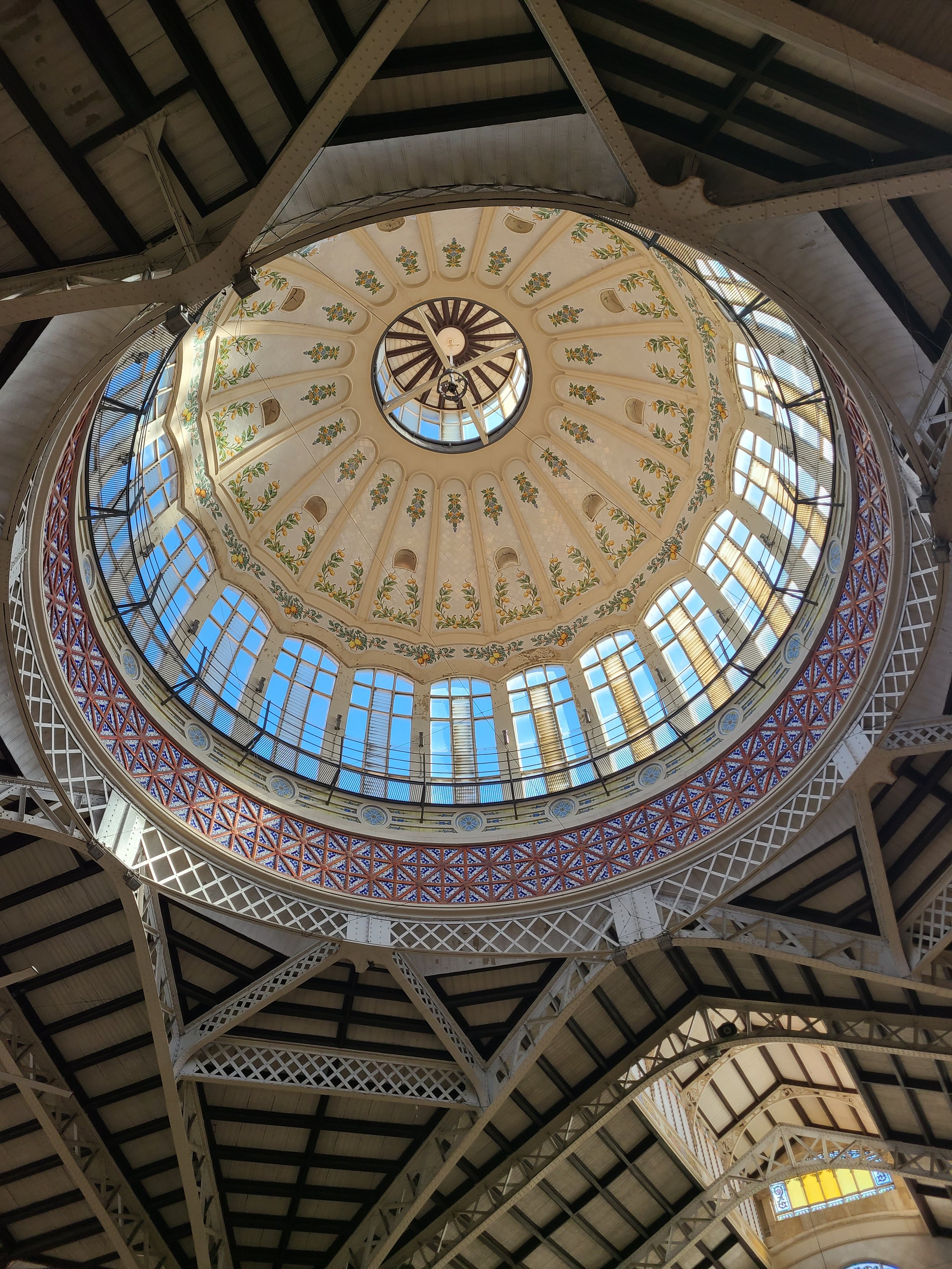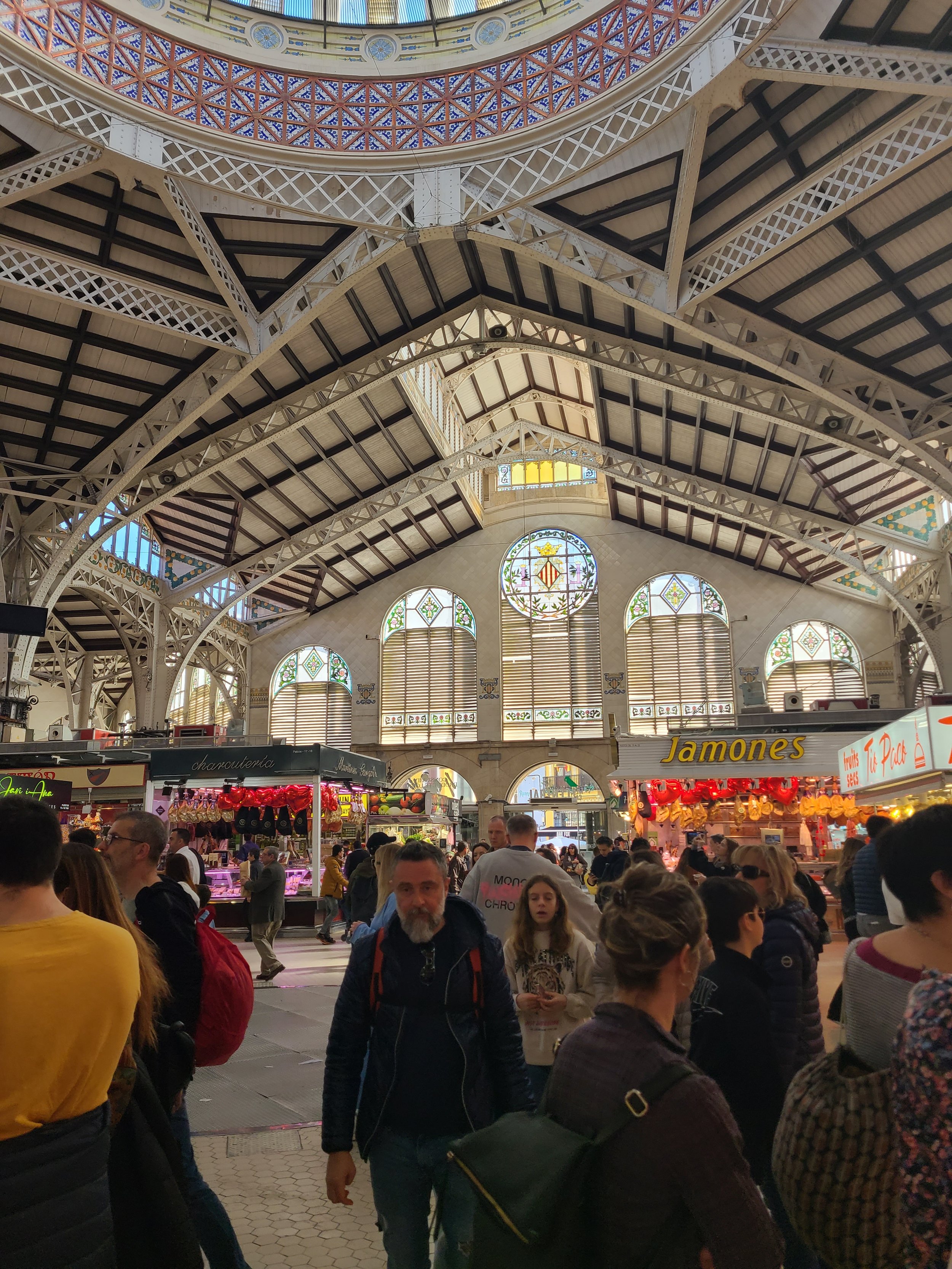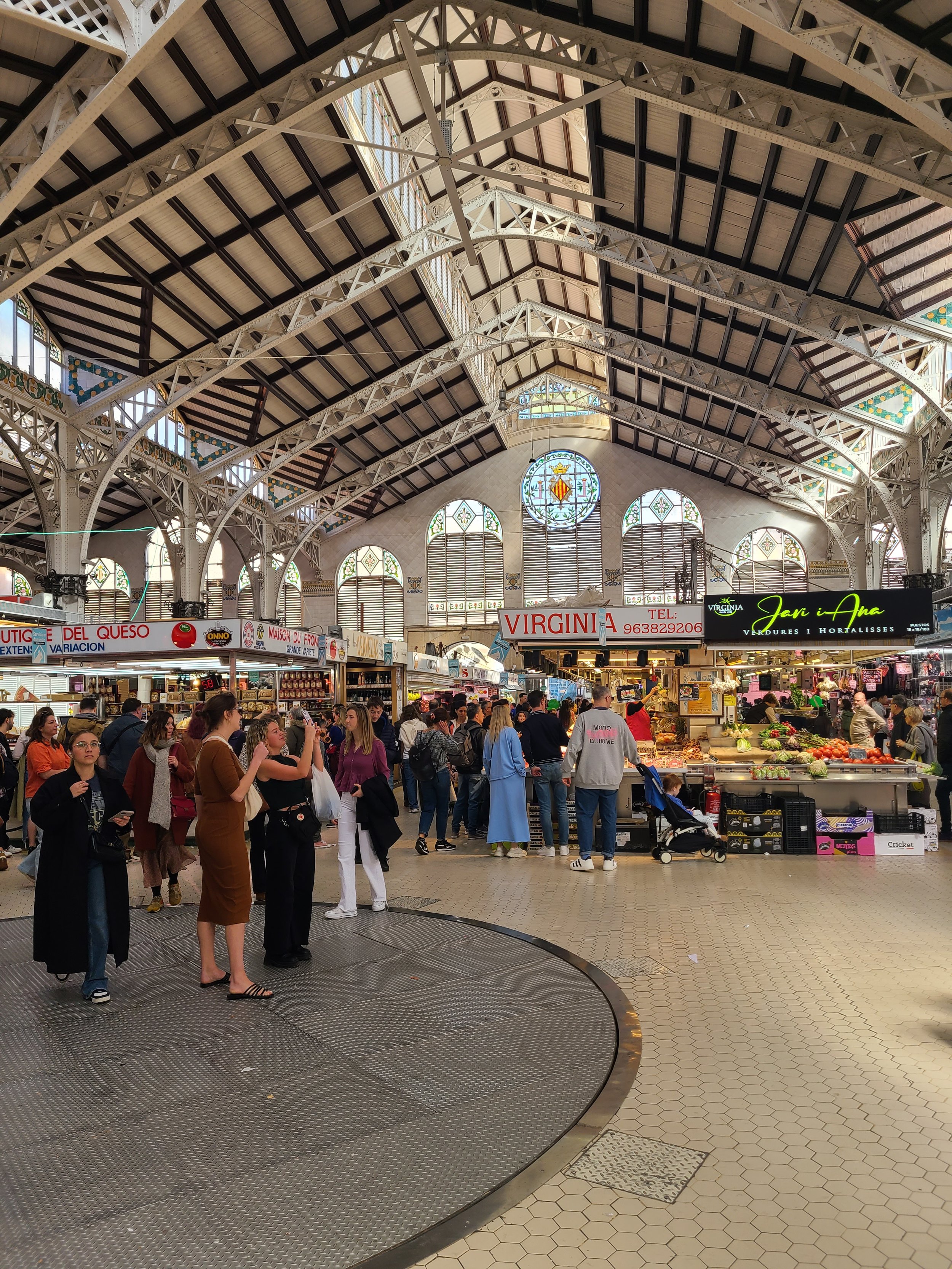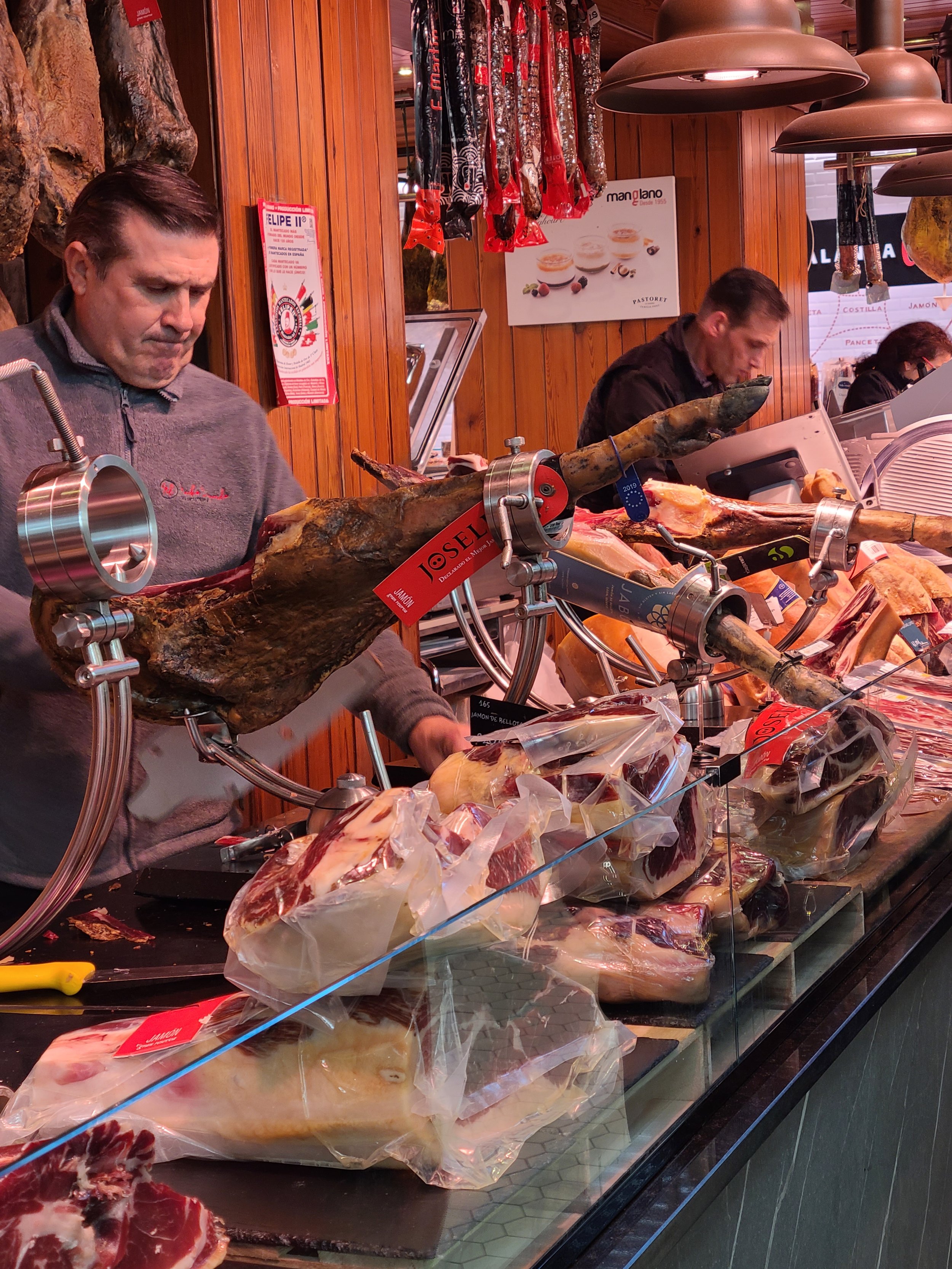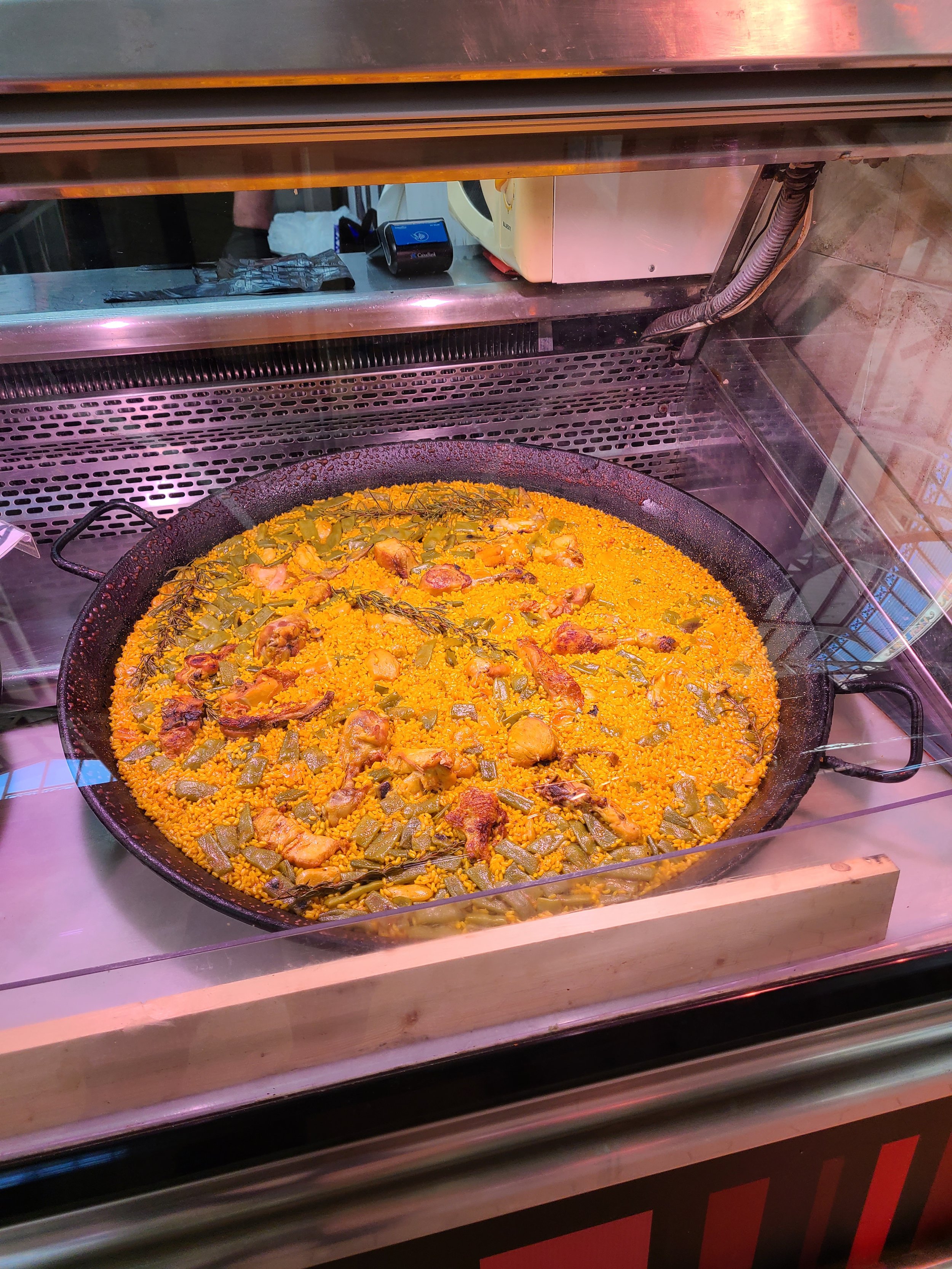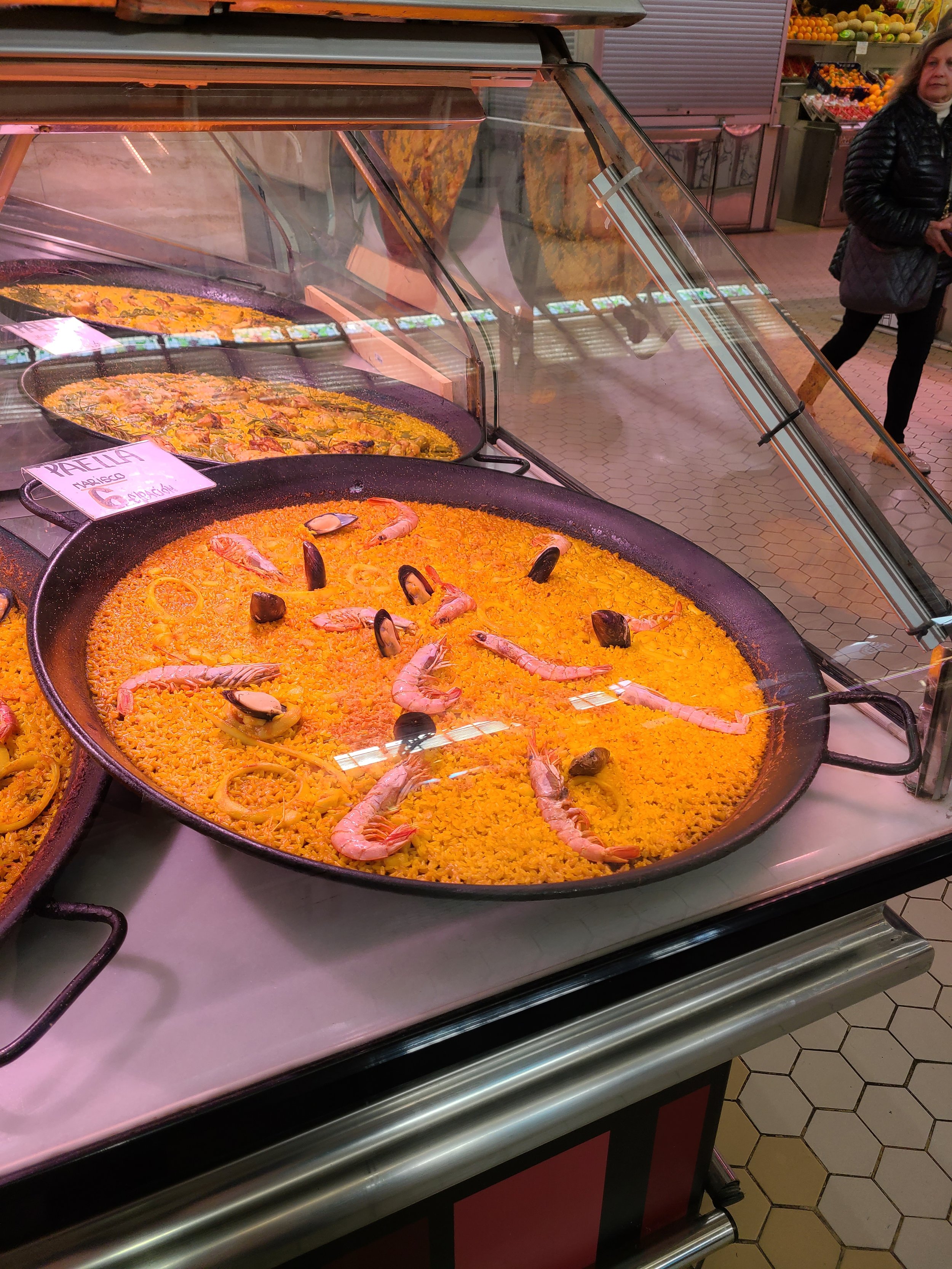Valencia
Valencia is a beautiful coastal city in the eastern part of Spain. I traveled from Barcelona to Valencia by train. It was a three-hour train ride. At times, the coast could be seen from the train.
Valencia is a much smaller city than Barcelona. Although it is known worldwide for its special rice dish known as paella, I was still focused on TAPAS!
I also had a long list of special places I wanted to visit in the Old Town of Valencia.
The research I did earlier showed that the Santos Juanes Church was not open on Sundays. Since I arrived on Saturday, I wanted to see this site first. As I made my way to the church, I was distracted as I noticed the beautiful and very large Mercado Central. The food once again was excellent and fun to see in its different displays.
It was lunch time, so I purchased a sandwich and water at one of the booths and sat on the steps outside the market enjoying lunch and the people watching opportunities. There were so many people in the streets enjoying the beautiful 60-degree weather.
After lunch, I noticed a sign for the Silk Exchange. This was on my list and so I headed to the ticket booth, purchased a ticket, and embarked on a self-guided tour of the exchange.
The official Spanish name of the building is Lonja de la Seda – which in English means Silk Exchange. The building was built between 1482 and 1533 and is composed of three parts.
The first part is the orange garden. This is a walled courtyard full of beautiful orange trees.
The main hall is the trading hall decorated by beautiful, twisted columns.
The side wing is named the Pavilion of the Consulate. The Pavilion was the seat of the Tribunal del Mar which was the first marine merchant tribunal founded in Spain.
The upper room of this building had a beautifully decorated ceiling.
The third part of the building was a central tower that was used as a prison for merchants who were sentenced by the Tribunal.
Before leaving the Silk Exchange, I inquired about the Santos Juanes Church. The scaffolding on the church was evident around the entire structure. I learned from the guards at the Silk Exchange that the church was closed. Since it was still early in the day, I decided to continue my adventure. I entered my next attraction into my GPS and walked to the San Nicolas church. This church is known as the Valencian “Sistine Chapel.”
San Nicolas church was erected as a parish around 1242. It was remodeled in the Gothic style between 1419 and 1455. Between 1690 and 1693, the interior was recoated with Baroque decorations and fresco paintings of the life of San Nicolas de Bari and San Pedro Martir. It is difficult to capture the beauty of this structure in pictures. This is the view of the church from the front doors. The main altar was magnificent with beautiful gold pillars surrounded by frescos on all sides.
The side altars were designated to different saints. One of the side altars brought back fun memories from my Catholic school days.
One of the assignments in my elementary school was to write a report on the saint that corresponded with the name we were given. I remember distinctly coming home from school quite disappointed and sharing my concern with my Mom. Was there really ever a Saint Denise? Why couldn’t I have an easy name like Mary or Barbara or Elizabeth? My Mom laughed. The next day we were headed to the library to search for a Saint Denise. There was no google back in those days so we searched through the card catalog and several very large books. What we learned is that Denise is the female version of the name Dennis. This we knew. We also learned that Dennis is a derivative of the name Dionysius. We found Saint Dionysius in the card catalog, and I was able to complete my report.
In all my travels thus far, this was the first time I saw a side altar dedicated to a Saint Dennis. Although this San Dionisio is different from the Saint Dionysius I wrote about in Catholic elementary school, it brought a smile to my face as I read the sign and saw the beautiful statue of this saint above the Madonna and child painting.
In this church there was also a special chapel with a tabernacle and other beautiful artwork.
This is a statue of Jesus during the Palm Sunday procession.
The baptismal font in this chapel was also beautifully displayed.
One of my favorite parts of this church were the four large paintings of modern-day saints.
The top painting was of beautiful Saint Mother Theresa and Saint Padre Pio. There is so much we can say about Saint Mother Theresa. I especially love how she referred to the Rosary as a weapon. She is a true inspiration to all of us.
One of the books I brought with me on this Spain adventure is titled: Beautiful Eucharist. On page 51 of this book is a beautiful quote from Saint Padre Pio – “Lord, I leave the past in Your mercy, the future in Your providential care and the present moment in Your love.”
The bottom painting was of three recent Popes – Saint Pio X, Saint John XXIII, and Saint John Paul II.
Saint Pio X was Pope from 1903 to 1914. He is known for vigorously opposing modernist interpretations of Catholic doctrines and for promoting liturgical reforms and scholastic theology.
Saint John XXIII is best known for convening the Second Vatican Council. One of his famous quotes is to “Consult not your fears but your hopes and your dreams.”
Saint John Paul II was another great pope who served from 1978 to 2005. He was the first non-Italian pope in 455 years and the first from Poland.
The top painting on the other side of the altar shows two priest saints – Saint Josemaria Escriva and Blessed Alvaro del Portillo.
During my last USA road trip, I visited the Shrine of the Blessed Sacrament in Hanceville, Alabama. At the shrine bookstore, I purchased a small book on the Way of the Cross written by Saint Josemaria Escriva. Saint Josemaria was born in Northern Spain in 1902. He was ordained a priest in 1925. In 1943 while working in Madrid, he founded the Priestly Society of the Holy Cross which is united with Opus Dei. Opus Dei unites spiritual life with professional, social, and family life. In 1946, Saint Josemaria moved to Rome and continued to encourage and guide the development of Opus Dei throughout the world. At the time of his death in 1975, Opus Dei had 60,000 members from 80 different nationalities.
Blessed Alvaro de Portillo was a new discovery for me. I had never heard of him before. In my research, I learned that he worked with Saint Josemaria Escriva and succeeded him as the head of Opus Dei. Blessed Alvaro was an engineer who joined Opus Dei in 1935. He was ordained a priest in 1944.
The three figures in the painting above are three of my favorite saints.
The woman on the left is Saint Edith Stein. She is an amazing woman who walked away from her Jewish faith and remained an atheist for many years. She was a German Jewish philosopher who learned of Catholicism from the writings of Saint Theresa of Avila and Saint John of the Cross. Saint Edith converted to Catholicism at the age of 31. Shortly after conversion she became a Carmelite nun. While in the convent, she continued her research and writing. One of the documents written while in the convent was a metaphysical book that combined the philosophies of Saint Thomas Aquinas and other prominent philosophers. In 1942, Saint Edith, her sister, and 900 other Jews were arrested and deported to Auschwitz where they died in mass gas chambers. Saint Edith Stein was canonized by Saint John Paul II and is considered one of the six patron saints of Europe along with Saint Benedict of Nursia, Saints Cyril and Methodius, Saint Bridget of Sweden, and Saint Catherine of Siena. Here is a quote from Saint Edith that was printed on page 89 in the book titled, Beautiful Eucharist - “Lay all your cares about the future trustingly in God’s hands and let yourself be guided by the Lord just like a little child.”
Saint Maria Goretti is the child in the painting. She was 11 years old when attacked by a young man in her village. She refused the sexual advances and fought off the attacker. As a result, he stabbed her numerous times. In addition to her commitment to purity, she is also known for the forgives she willingly granted her attacker as she lay on her death bed.
Saint Maximilian Kolbe is the third person in the painting. Saint Maximilian was a Polish priest with a strong love for the Blessed Mother. He too, like Saint Edith Stein, died in the Auschwitz death camps. He was arrested in 1941 for publishing and distributing anti-Nazi German publications. While in Auschwitz, Saint Maximilian worked as a priest and provided care to fellow inmates. After an escape by one of the prisoners, the Nazi guards selected 10 people to be starved to death as punishment. Saint Maximilian volunteered to die in place of a man who was selected who had a wife and a child. He was later canonized as a martyr. Here is a quote from Saint Maximilian Kolbe that was printed on page 30 of the book titled, Beautiful Eucharist - “The most deadly poison of our times is indifference. And this happens although the praise of God should know no limits. Let us strive therefore to praise Him to the greatest extent of our powers.”
The beauty of this church continues. In each of the side altars was a stand depicting the Stations of the Cross.
The final side altar displayed the crucifixion and burial of Our Lord.
The frescos continued as shown in this beautiful picture of the back of the San Nicolas Church.
I had fun walking around the Old Town of Valencia and seeing the beautiful and unique architecture.
Before long it was time for TAPAS.
Two more days in Valencia and then I’m off to Madrid.
Stay tuned for the rest of the adventure. There is so much more to see.
Book #3 will be published soon! Stay tuned!
Use the Amazon buttons below to order your copy of my latest books. Don’t forget to leave a review on Amazon! Thank you and Happy Reading to ALL…..
Click Here to read Denise’s articles on Catholic365.
For my favorite books by other authors - click here.
God Bless and Remember - Sharing is Caring!



